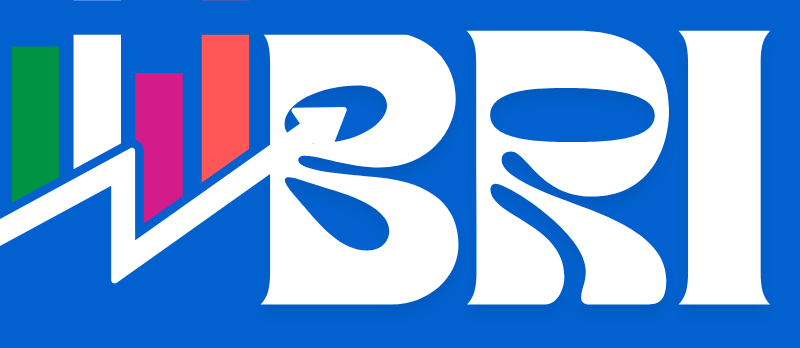
Fine Art Insurance Market Size
The global fine art insurance market size was valued at USD 441.54 billion in 2025, and the market revenue is expected to grow at a CAGR of 7.01% over the forecast period, reaching nearly USD 460.89 billion by 2034.
Fine Art Insurance Market Growth Factors and Dynamics
Customers’ evolving requirements and technological advancements are driving remarkable trends in the fantastic art coverage market. Blockchain technology is enhancing provenance tracing and valuation transparency, while AI tools are facilitating risk assessment and claims management as digital transformation is reshaping the enterprise.
Additionally, the proliferation of online platforms for the acquisition and sale of artwork has exacerbated the demand for cyber coverage insurance. Such coverage is intended to safeguard against virtual theft and fraud. The guidelines of insurers are being increasingly influenced by sustainability, as they are taking into account environmental hazards such as climate change, which poses a threat to art stored in vulnerable regions.
Unique requirements, such as temporary coverage for exhibitions or transportation, are being addressed by customized coverage programs, which are gathering recognition. The marketplace is expanding as a result of a surge in personal art collections, which is being driven by high-net-worth individuals.
At the same time, insurers, art experts, and technology companies are collaborating to promote innovation. These trends are indicative of the marketplace’s transition to a proactive approach to emergent risks, technology integration, and personalization.
Fine Art Insurance Market Restraining Factors
- Fraud and Forgery: The fine art market poses a risk to collectors and insurers as a result of the potential for fraud, forgery, and counterfeit artworks. In order to safeguard against losses caused by fraudulent transactions or counterfeit artworks, it is imperative to conduct comprehensive due diligence, verification processes, and risk management strategies when purchasing insurance. Insurance companies may implement measures to mitigate the likelihood of fraud, such as conducting thorough investigations into the backgrounds of policyholders and meticulously reviewing supporting documentation.
- Cybersecurity Risks: The digitization of art transactions and the utilization of online platforms for art sales and auctions are among the risks associated with cybersecurity. These risks include data breaches, cyberattacks, and cyber fraud. To combat hostile activity and illicit access, insurers must implement robust cybersecurity protocols and safeguard critical data. It may be imperative to obtain cyber insurance coverage to mitigate the financial losses associated with cyber catastrophes.
- Regulatory Compliance: The fine art insurance sector is subject to regulations and rules that govern insurance practices, contract terms, disclosure requirements, and consumer protection. To operate in this market, insurers must comply with regulatory frameworks, including state insurance regulations and industry standards established by organizations such as the Insurance Information Institute (III) and the International Association of Insurance Supervisors (IAIS).
- Globalization and Cross-Border Transactions: The fine art market is international, with regular cross-border transactions of artworks, including sales, purchases, and transfers. The complexity and risk of cross-border transactions can be further compounded by customs processes, international shipping rules, cultural heritage legislation, legal and regulatory variances, and other factors. In order to provide seamless coverage for clients engaged in international art transactions, insurers must surmount these challenges.
- Long-Term Conservation and Preservation: Fine art insurance policies may provide coverage for the costs of conservation and restoration to safeguard artworks for an extended period. However, the preservation of art assets in pristine condition requires consistent funding for conservation initiatives, risk-reduction strategies, and the implementation of best practices in collection management. Insurers may offer customized coverage solutions that are specifically designed to meet the unique preservation needs of art collectors and institutions.
Report Scope
| Feature of the Report | Details |
| Market Size in 2025 | USD 441.54 Billion |
| Projected Market Size in 2034 | USD 460.89 Billion |
| Market Size in 2024 | USD 439.39 Billion |
| CAGR Growth Rate | 7.01% CAGR |
| Base Year | 2024 |
| Forecast Period | 2025-2034 |
| Key Segment | By Coverage Type, Collection Size, Ownership, Purpose of Insurance and Region |
| Report Coverage | Revenue Estimation and Forecast, Company Profile, Competitive Landscape, Growth Factors and Recent Trends |
| Regional Scope | North America, Europe, Asia Pacific, Middle East & Africa, and South & Central America |
| Buying Options | Request tailored purchasing options to fulfil your requirements for research. |
Fine Art Insurance Market COVID-19 Analysis
The global COVID-19 pandemic has been unprecedented and awe-inspiring, resulting in a lower-than-anticipated demand across all regions in comparison to pre-pandemic levels. The market’s growth and demand returning to pre-pandemic levels are the reasons for the abrupt market growth, as evidenced by the increase in CAGR.
The COVID-19 pandemic had a significant negative impact on the development of the fine art insurance market, as it caused disruptions throughout the global art market. The primary reason for the significant decrease in art sales and exhibitions was the protracted closures of public sale houses, museums, and galleries.
This diminished interest led to a reduction in the demand for high-quality art insurance, particularly guidelines covering transportation and temporary exhibitions. The movement of art was further complicated by travel regulations and logistical challenges, which had an impact on insurers who rely on premiums associated with transportation hazards.
Additionally, the money uncertainty caused many lenders and businesses to postpone or cut back on their new purchases, which stopped the growth of insured portfolios. Some galleries and artists chose to forego or reduce coverage as a result of the monetary pressure, which resulted in tighter budgets.
Insurers observed a decrease in revenues, but there was no longer a proportional decrease in operating expenses, as claims associated with physical damage or larceny decreased as a result of reduced public access. The sector’s susceptibility to international disruptions was emphasized during this period.
List of the prominent players in the Fine Art Insurance Market:
- Christie’s Insurance Services
- Marsh
- Phillips
- Zurich
- JLT
- Sotheby’s International Realty
- AXA ART
- Chubb
- Willis Towers Watson
- BMS Group
- AIG
- Bonhams
- Hiscox
- Lloyds of London
- Others
The Fine Art Insurance Market is segmented as follows:
By Coverage Type
- All Risks
- Specified Risks
- Named Perils
By Collection Size
- Small
- Medium
- Large
By Ownership
- Private Individuals
- Galleries
- Museums
- Corporations
By Purpose of Insurance
- Valuation
- Transportation
- Storage
- Exhibition
Regional Coverage:
North America
- U.S.
- Canada
- Mexico
- Rest of North America
Europe
- Germany
- France
- U.K.
- Russia
- Italy
- Spain
- Netherlands
- Rest of Europe
Asia Pacific
- China
- Japan
- India
- New Zealand
- Australia
- South Korea
- Taiwan
- Rest of Asia Pacific
The Middle East & Africa
- Saudi Arabia
- UAE
- Egypt
- Kuwait
- South Africa
- Rest of the Middle East & Africa
Latin America
- Brazil
- Argentina
- Rest of Latin America
[embedsocial_reviews id=”d4ae80cffae3d938f997111953699a733c8e6f99″]
